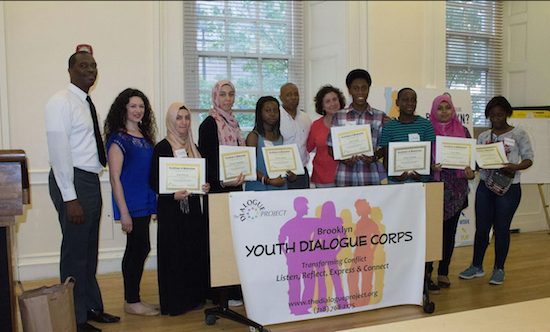Youth dialogue corps engages public as part of graduation exercises
BP Adams Urges Teens to ‘Move Out of Comfort Zone’

The 2015-16 Brooklyn Youth Dialogue Corps students proudly hold their certificates. Standing in witness with them are Pastor Gilford Monrose (left), youth coordinator/facilitator Daria Somers (second from left), Brooklyn Borough President Eric Adams (center) and Dialogue Project founder Marcia Kannry. Eagle photos by Francesca N. Tate
The willingness to step out of one’s comfort zone was a theme of The Dialogue Project’s Youth Dialogue Corps commencement at Brooklyn Borough Hall, which took place on May 25.

Brooklyn Boro
View MoreNew York City’s most populous borough, Brooklyn, is home to nearly 2.6 million residents. If Brooklyn were an independent city it would be the fourth largest city in the United States. While Brooklyn has become the epitome of ‘cool and hip’ in recent years, for those that were born here, raised families here and improved communities over the years, Brooklyn has never been ‘uncool’.